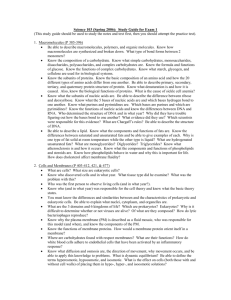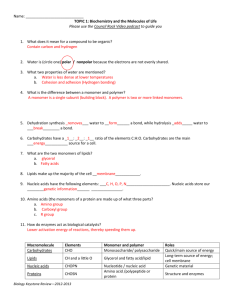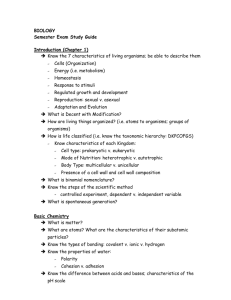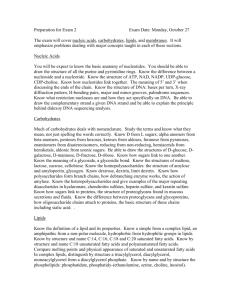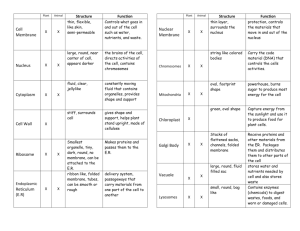Study Guide for Transport, Macromolecules and Membranes
advertisement
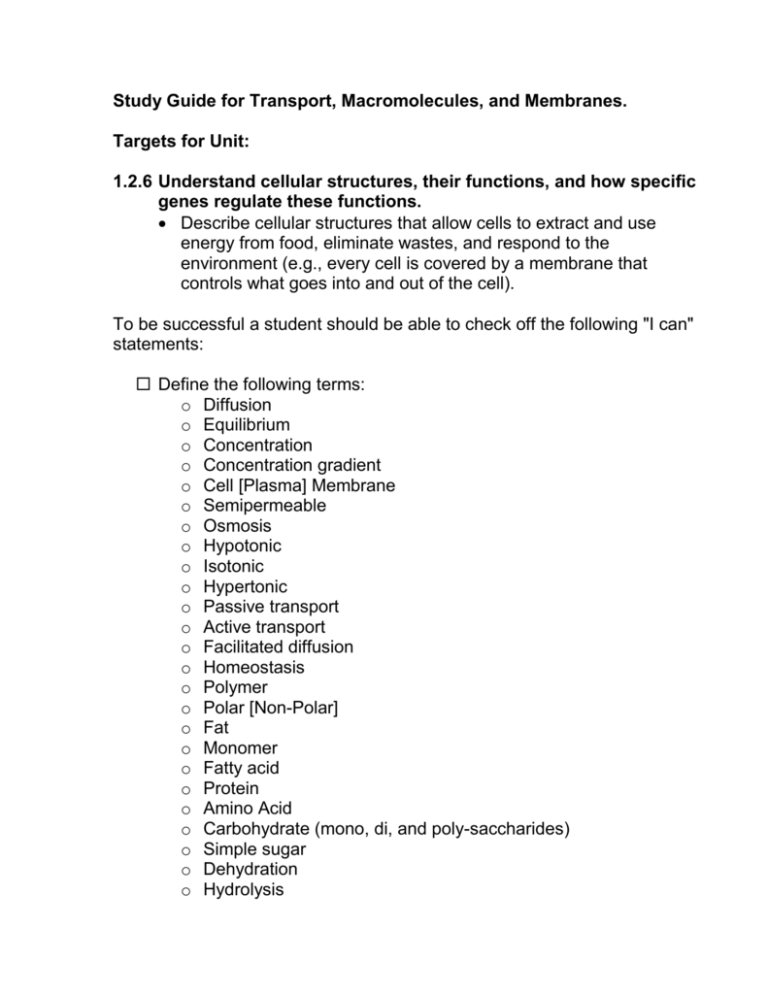
Study Guide for Transport, Macromolecules, and Membranes. Targets for Unit: 1.2.6 Understand cellular structures, their functions, and how specific genes regulate these functions. Describe cellular structures that allow cells to extract and use energy from food, eliminate wastes, and respond to the environment (e.g., every cell is covered by a membrane that controls what goes into and out of the cell). To be successful a student should be able to check off the following "I can" statements: Define the following terms: o Diffusion o Equilibrium o Concentration o Concentration gradient o Cell [Plasma] Membrane o Semipermeable o Osmosis o Hypotonic o Isotonic o Hypertonic o Passive transport o Active transport o Facilitated diffusion o Homeostasis o Polymer o Polar [Non-Polar] o Fat o Monomer o Fatty acid o Protein o Amino Acid o Carbohydrate (mono, di, and poly-saccharides) o Simple sugar o Dehydration o Hydrolysis Cellular Macromolecules: describe the processes which allow monomers to be joined to form polymers as well as polymers to be broken down into monomers. give examples of carbohydrates, lipids, proteins, and nucleic acids including at least one location within a cell where each can be found. compare and contrast the structure of carbohydrates, lipids, proteins, and nucleic acids compare and contrast the function of carbohydrates, lipids, proteins, and nucleic acids describe the structure and properties of a water molecule, including its polarity Membranes and transport: Understand why is the salt concentration of the environment around cells is important? Understand that the cell membrane controls which substances enter and exit? Know how organisms maintain water balance in non-isotonic environments (Transport mechanisms across the membrane)? Know how a concentrated solution on one side of a membrane affects the direction of the overall movement of water through the membrane? Know what properties determine whether molecules can pass through a biological membrane? Know how the size of a molecule affects its ability to pass through a semi-permeable membrane? Know what properties of real biological membranes cause them to be semi-permeable?
